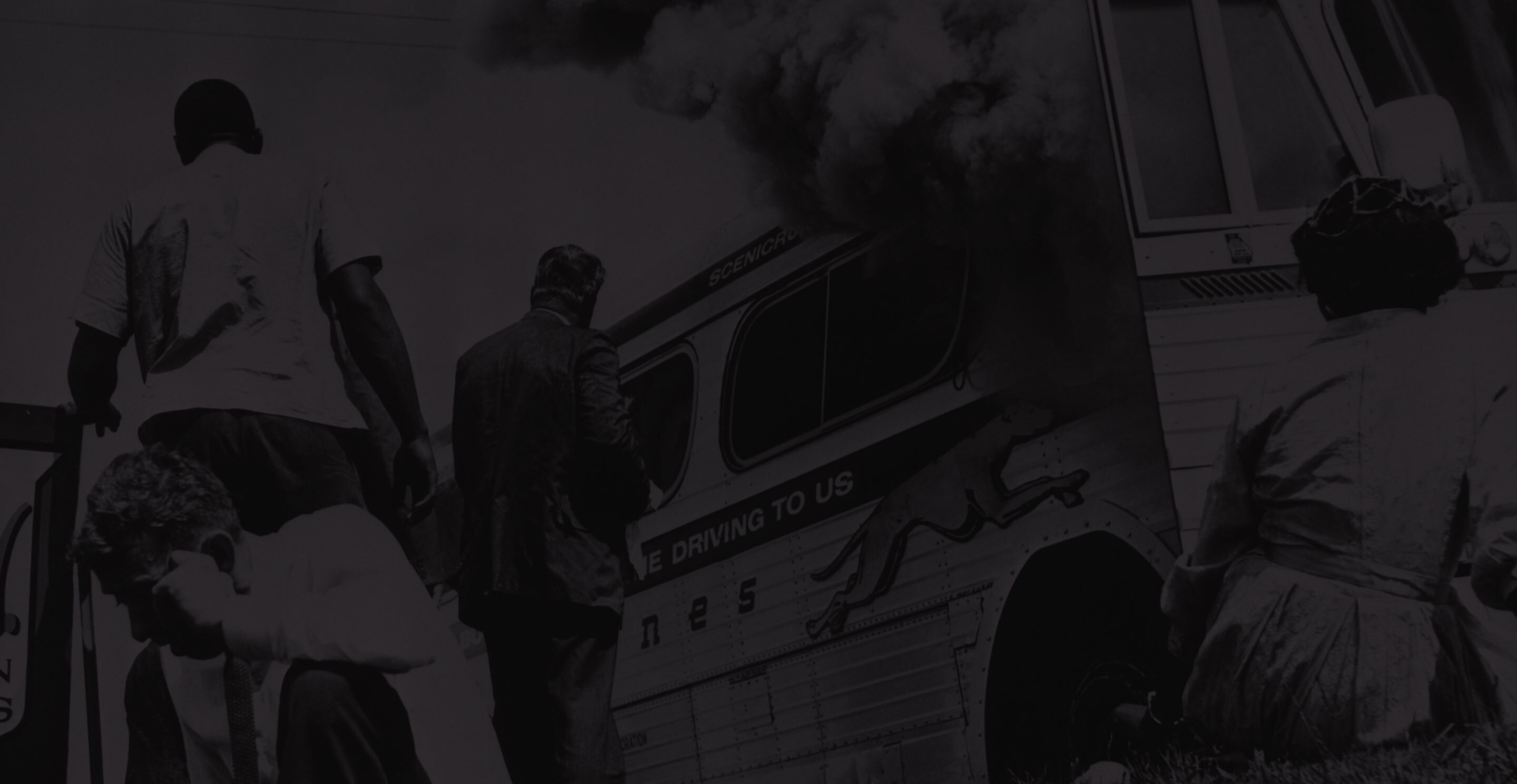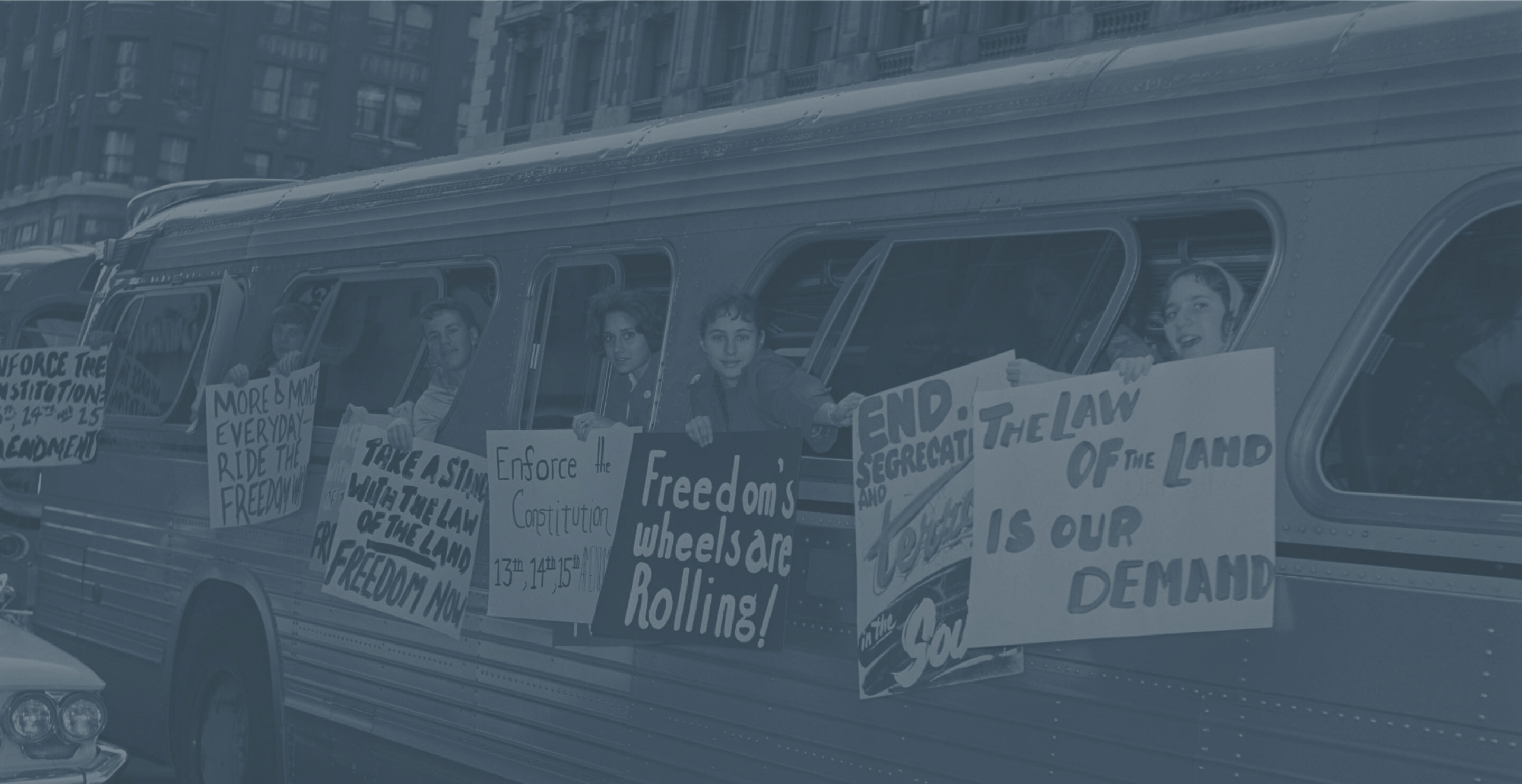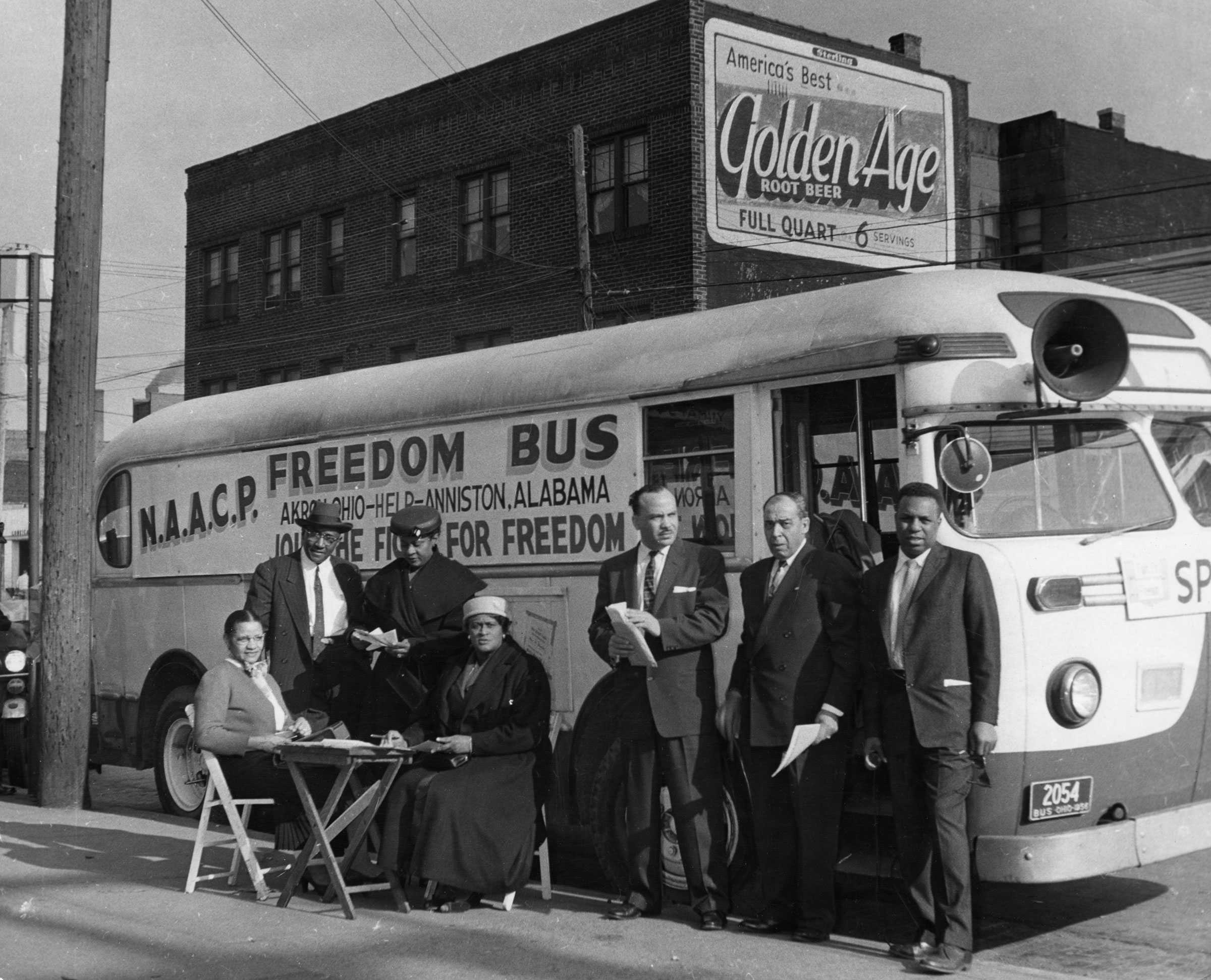
Chapter 3
Protesting and Marching for Civil Rights
African Americans resisted segregation through individual and collective action. Privately, they attended to their families, their communities, and their lives. Publicly, they boycotted, marched, and protested, forcing businesses and cities to desegregate.
Organizations such as the Southern Christian Leadership Conference (SCLC) and the Student Nonviolent Coordinating Committee (SNCC) provided training and funding for desegregation efforts.
What Were the Freedom Rides?
Freedom Riders’ bus burning
The goal of the Freedom Rides was to end segregation in transportation throughout the South.
In 1961, the Congress of Racial Equality (CORE) recruited people to challenge segregated interstate busing systems. Thirteen riders left Washington, D.C., in May 1961 for New Orleans, Louisiana. In South Carolina, John Lewis and two colleagues were attacked for trying to use a white waiting room. In Alabama, one bus was firebombed and its riders beaten. Media coverage of the violence prompted Attorney General Robert F. Kennedy to intervene, and the Interstate Commerce Commission eventually issued regulations against segregation in interstate travel.
John Lewis Continues His Activism
John Lewis’s Mississippi mugshot
By 1961 John Lewis was a founding member of SNCC and active in the Nashville student movement. He was also one of the original thirteen CORE Freedom Riders. On his first ride, he was beaten in South Carolina, attacked in Alabama, and arrested in Mississippi, where he spent weeks in prison. Lewis spoke at the March on Washington in 1963 and helped lead the Selma to Montgomery March in 1965. He was elected to Congress in 1986.

Featured Video
John Lewis Remembers the Freedom Rides
John Lewis explains what it was like to participate in the Freedom Rides.

Members of the Washington Freedom Riders Committee traveled from New York to Washington, D.C., to protest attacks on Freedom Riders.
Joan Trumpauer Joins the Movement
Joan Trumpauer’s Mississippi mugshot
Joan Trumpauer’s denim vest
As a 19-year-old Duke University student, Joan Trumpauer joined civil rights protests in Durham, North Carolina. She later joined the Freedom Rides and was arrested, fined, and sent to prison in Mississippi. Facing difficult conditions, she remained in prison with other Freedom Riders for three months. After her release, Trumpauer continued her activism while attending Tougaloo College in Mississippi, where she became the first white woman accepted into Delta Sigma Theta Sorority. She remained involved in protests through the passage of the Civil Rights Act of 1964.

Segregation was unfair . . . It was wrong, morally, religiously. As a southerner—a white southerner—I felt that we should do what we could to make the South better and to rid ourselves of this evil.
Joan Trumpauer

